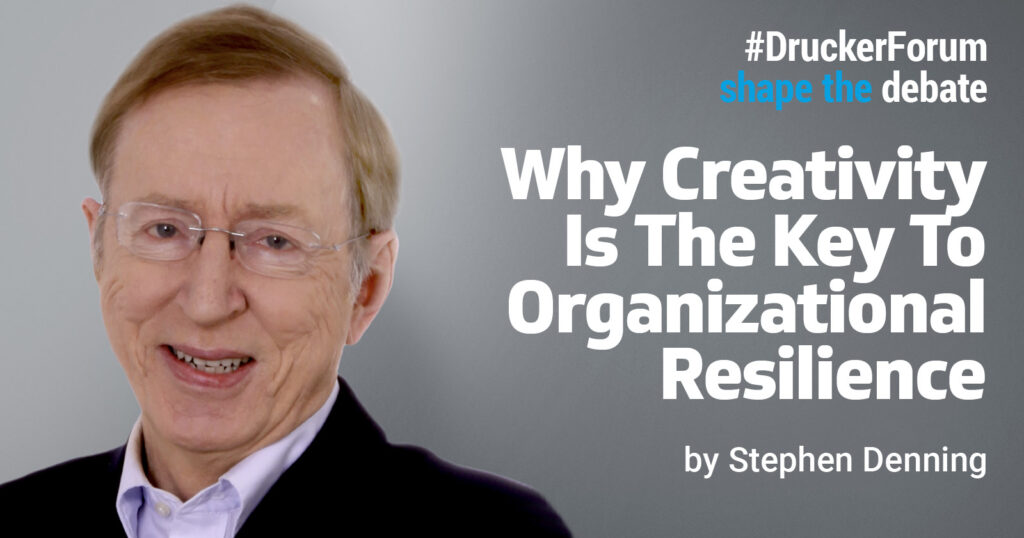
Seven Keys To Creating A Culture Of Creativity
Figure 1: Logos of some of the most valuable, and fastest growing, firms in the world
Today, the key to resilience is creativity. The top 20% of firms, including the firms in Figure 1, are resilient because of their embrace of a culture of creativity. As a result, they are more valuable, and are growing faster, than the bottom 80%, and hence more resilient.
In the 20th century, firms achieved scale and resilience through processes that enabled greater efficiency. Indeed, the concept of management even came to be seen as a set of processes that delivered ever more efficient production of “more of the same.”1 Creativity suffered. That’s because processes don’t generate creativity, which involves “doing something different of greater value.”
Understanding The Key Assumptions Of A Creative Culture
A culture of creativity resides, not in a firm’s processes, but in its culture. Culture, as business guru Edgar Schein noted in his seminal book, Organizational Culture and Leadership, (Figure 2) is “the pattern of barely conscious assumptions that group members have acquired over time as they learn to successfully cope with internal and external organizationally relevant problems.”2
Figure 2
While some assumptions have little bearing on creativity (e.g. “where we eat” or “how we dress”), some key assumptions, particularly those in Figure 3, are central to a firm’s creativity, resilience, and even survival. These assumptions are largely the opposite of those in the bottom 80% where both creativity and resilience are lacking.
Figure 3
The Key Performance Assumptions Of Today’s Most Creative Firms
- The Top 20% Assume Their Goal Is Creating Customer Value
The top 20% of firms generally assume that a firm’s purpose is to create value for customers. They work backwards from the customer’s needs to explore multiple ways of meeting those needs. By contrast, the bottom 80% typically assume that the firm’s purpose is to make money for itself by continuing its own current mode of operation, thus systematically missing marketplace opportunities.
- The Top 20% Assume Firms Are Agile, Interactive Networks
The top 20% achieve agility and creativity by embracing the assumption that an organization is an interactive network, in which autonomy is granted to self-organizing teams that operate with agreed goals and performance outcomes. By contrast, the bottom 80% usually operate as hierarchies of authority, that make them slow to adjust to marketplace shifts.
- The Top 20% Assume Firms Are Complex Adaptive Organisms
The top 20% typically see an organization as a living organism, not a machine. Any individual decision is expected to have unpredictable reactions throughout the firm. Continuous experimentation is the norm. By contrast, the bottom 80% usually assume that the firm can be managed with simple cause-and-effect thinking.
- The Top 20% Assume Management Is Multi-dimensional
The top 20% of firms generally realize that the success of making improvements to a single dimension (like strategy, budget, HR, or technology) will be determined partly by the interaction with other dimensions of management. By contrast, the bottom 80% often attempt changes within a single dimension.
- The Top 20% Embrace The Role Of Mindsets And Assumptions
The top 20% typically embrace the role of mindsets and assumptions in running the firm, including customer focus, self-organizing teams, and an expectation of change. By contrast, the bottom 80% usually view management simplistically as a set of observable processes as shown in Figure 4, thus treating subjective mindsets and assumptions, as somehow “outside management.”
Figure 4
6. The Top 20% Assume That Management Is About Enablement
The top 20% assume that everyone can innovate, not just appointed managers. The assumption that “managers know best” gives way to the realization that expertise exists throughout the organization. The bottom 80% still tend to see management as control, with authority hoarded by those with managerial job titles. This drastically limits the creativity of the firm.
- The Top 20% Make Competitors Irrelevant
Apple’s iPhone didn’t just defeat Nokia’s market-leading phone in 2007. The iPhone made Nokia’s phone, and almost every other portable phone, irrelevant. The iPhone was able to do so many things, better, more quickly, more easily, and more elegantly, than any other device. Tesla now appears to be on a similar track in automobiles.3
By contrast, the bottom 20% are still mainly in the grip of Michael Porter’s 1979 dictum, “The essence of strategy is coping with competition.”4 GM and Ford compete with each other on traditional gasoline-based vehicles, and struggle to do the rethinking necessary to prosper in the emerging electric-vehicle world.
About the author:
Stephen Denning is a Senior Contributor at Forbes.com and a director of the SD Learning Consortium.
THE DRUCKER FORUM WORKSHOP ON NOVEMBER 29, 2023, 2PM-5PM
To learn more, attend the author’s workshop “Reimagining Management For Creative Resilience” Vienna Hilton Plaza, Schottenring 11, 1010 Vienna, Austria.
The workshop will address the central question posed by the Drucker Forum 2023— how to achieve creative resilience in the digital age.
The workshop is available to all participants in the Drucker Forum
Register here: https://www.druckerforum.org/2023/special-events-2023/
References :
- Hamel, G. “Why Management Matters with Raffaella Sadun”, June 6, 2023, https://www.garyhamel.com/video/why-management-matters-raffaella-sadun “Management is simply the tools, the methods, processes and structures that we use as human beings to do together what we couldn’t do alone.”
2. Wiley, 5th ed, 2016.
3. Denning, S. “How Tesla Is Revolutionizing Management To Save The Planet,” Forbes.com. July 5, 2023. https://www.forbes.com/sites/stevedenning/2023/07/05/how-tesla-is-revolutionizing-management-to-save-the-planet/
4. Porter, M. “How competitive forces shape strategy” McKinsey, 1979, https://getdowntobusiness.typepad.com/rdjohnson/files/how_competitive_forces_shape_strategy.pdf

